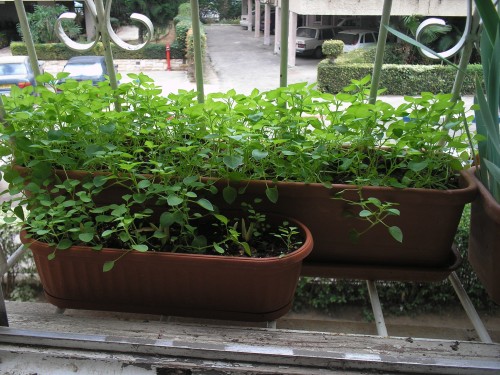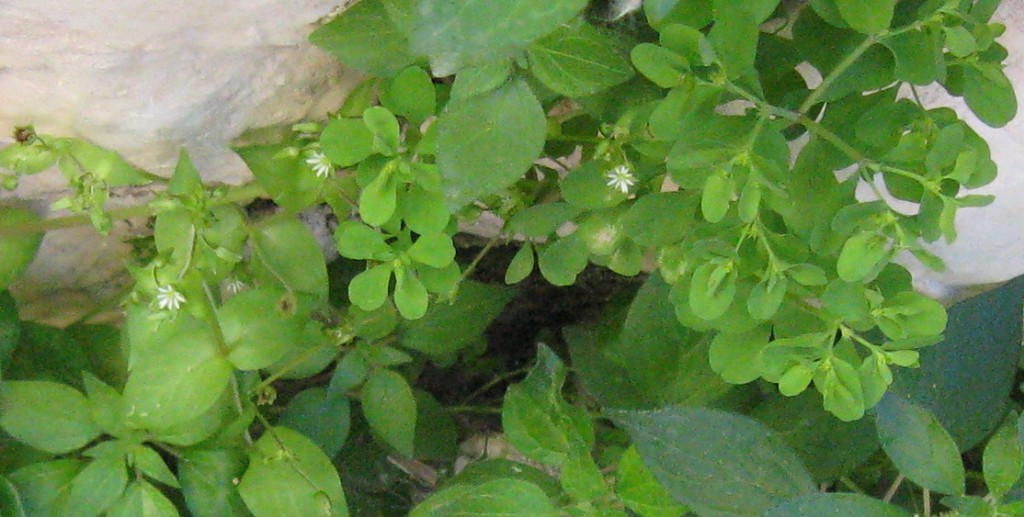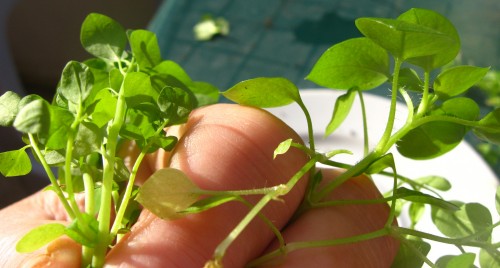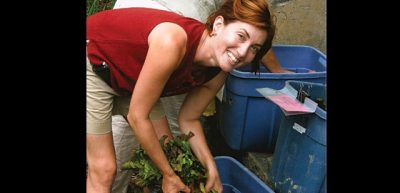 It’s easy to cultivate chickweed (a vitamin powerhouse) on your windowsill for a quick springtime salad.
It’s easy to cultivate chickweed (a vitamin powerhouse) on your windowsill for a quick springtime salad.
One of the most prevalent edible weeds thriving now in the Mediterranean is chickweed, Stellaria media if you want to get botanical about it.
Its flavor is delicately salty and fresh, not at all like spinach. (Every edible weed’s flavor is described as spinach-like. I’d love to hear someone describe a food as fresh and chickweed-like.) Want to know how to cultivate it?
Birds love chickweed; hence its folk name. And for centuries, people have loved it too. It’s tasty, easy to digest, and good for you. In season, I cut about a cupful from my windowsill planters, rinse it, and mix it into my salads. Or layer it into sandwiches, or add it, chopped, to omelets just before serving. Cooked, the tender plant loses its flavor and becomes stringy and unappetizing.
If you care to cultivate chickweed, it’s an easy thing to do in the Middle East where it is native. Gather it when summer arrives and the plant has gotten long and leggy, with white flowers.

Bring the wild inside by growing chickweed at home
How to start your chickweed garden
There will be plenty of tiny, bright-orange seeds among the flower heads. Scatter them wherever you wish to grow chickweed, and wait till next spring. It will grow and re-seed every year, so you’ll only need to sow once. To harvest it, take a pair of scissors and just snip the leafy tops off, giving it a haircut and leaving at least an inch of stem. You will get a second crop several weeks later.
Chickweed is one of the first edible greens to pop up after winter. Old folks from freezing climates where people ate no fresh vegetables for months, recall how joyful was its appearance (and dandelion’s). It’s a powerhouse of nutrients, offering Vitamins B6, B12, D, and C, ruitin, biotin, choline, and beta carotene as well as the minerals magnesium, iron, calcium, potassium, zinc, phosphorus, and more.
And this tender little weed, which often hides under the taller nettles and mallows of this season, has a large range of medicinal properties as well.
How to make chickweed tea
Chickweed has the power to draw infected matter out of tissue. So if, for example, a splinter in your finger has become infected, soaking it in strong chickweed tea will draw the splinter and pus out. I use the fresh weed, or dry it for strong tea when it’s out of season, in cases of eye infections and boils. Crush the fresh weed and press it to the infected eye: as it draws infection out, the green poultice will get hot. Throw it out, wash your hands, and do it again.
The herb contains saponins, a chemical constituent that dissolves congestion and cleans waste matter out. The kidneys, liver, skin and lungs benefit from this gentle cleansing. You can get this by eating lots of fresh chickweed or drinking chickweed tea.
How to make a chickweed tincture
Tea or tincture of chickweed is helpful in treating acne, and its diuretic properties aid in weight reduction. It is a soothing, lubricating plant whose abundant use in salads or as tincture will ease inflammatory conditions like arthritis. I’ve found chickweed to be soothing to the spirit also, acting not like an anti-depressant but more as something that reduces sorrow and agitation to manageable levels.
Chickweed’s a soft, low-growing plant with tiny white flowers whose five petals are so deeply cleft they look like ten. An important characteristic of chickweed, and one that helps the forager to distinguish it from a toxic look- alike, is the row of tiny hairlike fibers that climb along its stems.
The toxic look-alike is a common spurge (euphorbia). Even experienced foragers look twice – in fact experienced foragers always look twice – to make sure that what they’re gathering is chickweed, not spurge. The second photo from the top shows flowering chickweed on the left and spurge, with its narrower, clustered leaves, on the right.
Here you can see chickweed and spurge side by side from the back. Spurge is on the left, with long, almost leafless stems and a bunch of dark leaves at the tops. Chickweed, on the right, has trailing, branching stems with the characteristic line of hairs.

Remember to harvest chickweed, as well as all other wild herbs, from clean places free from the wastes of dogs and cats.
More on weeds:
A Farmer’s Story on Natural Sheep Grazing
EcoBaladi Sprouts Organic Vegetables From the West Bank Valley of the Thorns
Permaculture and Green Communal Living Through Eco-Israel




Patricia, that’s also a photo of spurge, just from a different angle.
Stephanie, apologies for overlooking your comment. Chickweed should grow in the Beer Sheva area, where there are irrigated gardens or other places that get moisture in the late winter.
one question, in your 2nd photo there´s a weed next to the chickweed, which one is it? because i have it all over my yard. im not talking abouth the 3rd photo whith the spurge.
I have a question of Miriam, or of anyone else who might be able to help. I live in the Beer Sheva area, and a gardener I know is not familiar with chickweed. Does it grow in the Negev, or need I travel north in search of seeds?
Many thanks for an informative post!
Stephanie